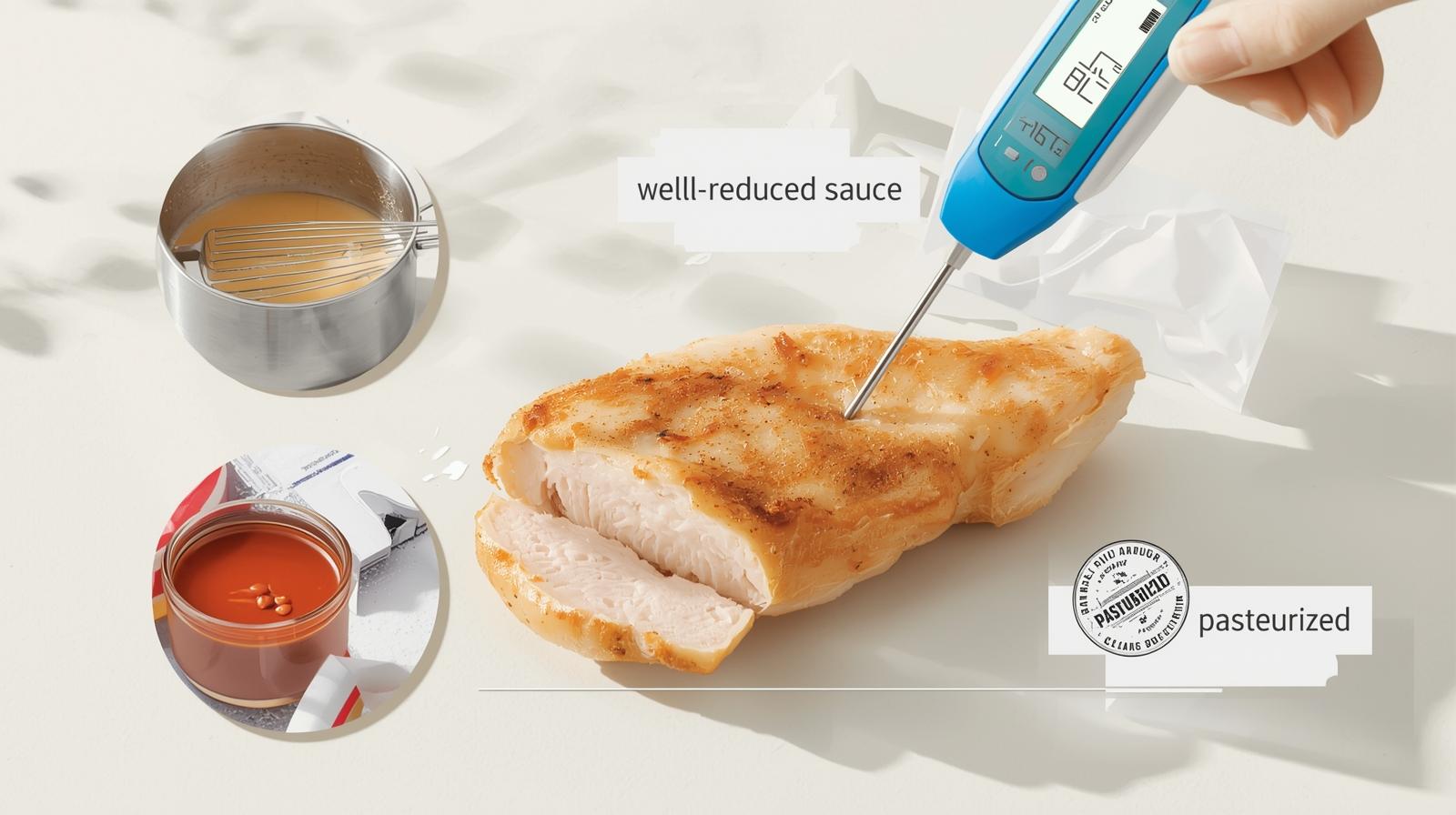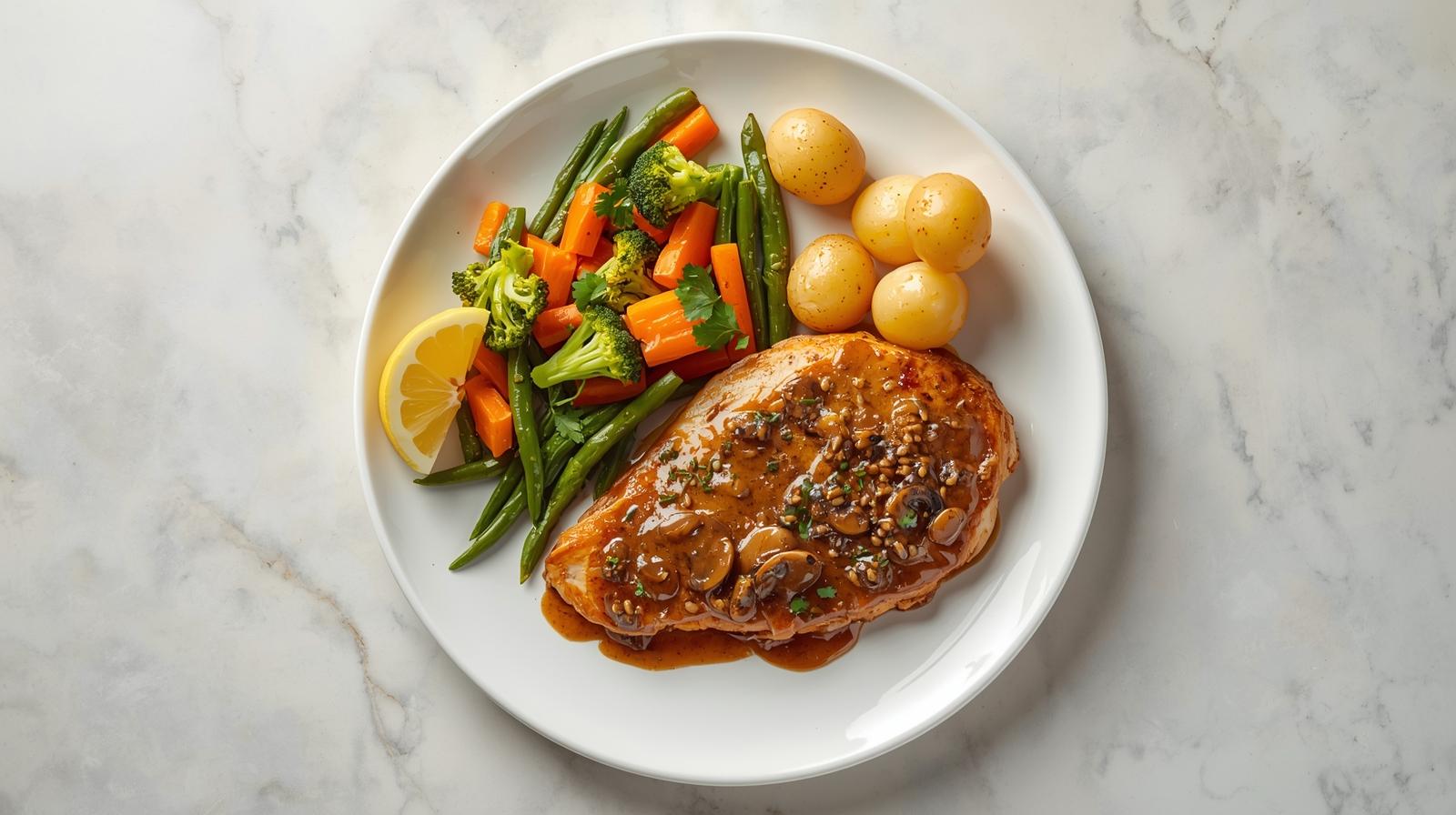
Chicken Marsala in Pregnancy — The Short Answer
Yes—Chicken Marsala is generally safe in pregnancy when prepared with food-safe temperatures and a sauce handled thoughtfully. The safety levers are: (1) chicken doneness (165°F/74°C internal), (2) wine reduction or a no-alcohol swap, (3) pasteurized cream/butter if used, and (4) hot serving and prompt chilling for leftovers. Some alcohol can remain in wine sauces unless simmered long enough—if you prefer zero alcohol exposure, ask for the sauce to be made without wine. [1] [3] [2]
In this guide
- Chicken Marsala 101: what’s in the pan
- Food-safe temperatures: poultry 165°F/74°C
- Wine reduction & residual alcohol — practical choices
- Cream & butter: pasteurization checks
- Restaurant ordering script
- Home cooking playbook
- Leftovers, reheating & the 2-hour rule
- Portions & balanced plate ideas
- Pregnancy FAQ — Chicken Marsala
Chicken Marsala 101 — Pan-seared chicken, mushrooms, and a fortified-wine sauce
Classic Chicken Marsala sautés floured chicken cutlets in a skillet, adds mushrooms and aromatics, then deglazes with Marsala wine (a fortified wine from Sicily) and stock, sometimes finishing with butter or cream. The pregnancy-relevant factors are poultry doneness, wine handling (reduction vs omission), pasteurization of any dairy, and hot-holding/leftovers hygiene. [1] [4] [5]

The Non-Negotiable: Poultry at 165°F/74°C
Food safety agencies emphasize temperature over “looks.” Poultry must reach 165°F/74°C measured with a food thermometer. That’s the benchmark for killing common pathogens in chicken. If ordering out, you can request “well-done to 165°F/74°C.” At home, probe the thickest part after resting briefly. [1]

